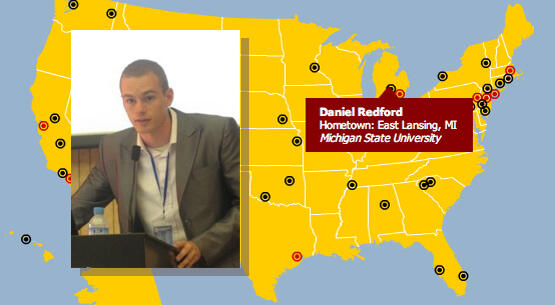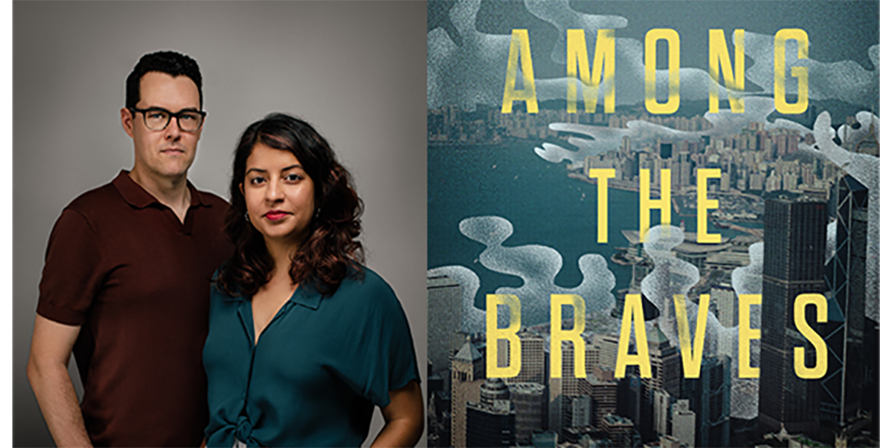The Magic School Bus May 9, 2010
When I was a kid, I loved the Magic School Bus books. Every one of my homeroom teachers from kindergarten to fourth grade had their libraries stacked with them. I was fascinated with the journeys that Ms. Frizzle and her fourth grade class went on in their “Magic School Bus” that would take them back in time to see the Egyptians, or on a deep sea exploration. I liked to imagine the places that I would go if I had a magic school bus that would take me wherever and whenever I wanted.
Now, at age 21, it's probably over ten years since I last picked up one of those books, I find myself with my own Magic Bus here at the World Expo. Every morning, my bus picks me up from my apartment complex, and takes me to a world that is outside of reality.
My first stop is Japan. Japan looks like what we’ve always imagined the future to be: digital, technological, spacy (and purple?). Jet packs, hovercrafts, and lunar living all seem to be modern realities when you pass Japan. In the distance is China.
China is a little far, but you can still see it towering over the skyline. But the magic bus doesn’t stop there. Along the way to my destination, I pass by all the world’s countries. Saudi Arabia stands stoically, projecting together thousands of years of Arabian history with a future of urban gardens and sustainable living. Above the bus, people from all over the world instantly walk between the world’s countries on an elevated plane, a trip that hundreds of years ago would have fallen under the science fiction category.
Passing by the bus, hundreds of German settlers march by in a processional, singing songs and smiling the whole way. We then wiz past Canada, and Europe, in the blink of an eye. The bus has now dropped me off now in a surreal place. I am next to the African continent, where I witness hundreds of African people dressed in traditional tribal garb, all playing beautiful African songs with wind instruments and bongos. There is joy there, and I can’t help but smile.
Walking towards a familiar place, I pass by South Africa, and witness the “Rise of A Modern Economy.” Around the corner, I see, in the same glance, people sitting on benches eating Burger King and Papa John’s while a pair of Scottish Gentleman in kilts are playing beautiful bagpipe music. I stop and listen for a moment, then continue to explore just what this place is that the bus has taken me to.
Taking the last few steps into the United States, I hear a familiar baritone sounds, and the dull roar of a large procession. I see that there is another huge parade of people coming from South America that are playing instruments, dressed in old European settler garb, dancing and marching through the streets.
I’ve now arrived at home, back in the U.S. I can still hear the excitement that is all around me. I’m in the U.S., but I can feel that the world is in my grasp. I’m living it. I’m experiencing all the world’s cultures at once. Jules Verne changed the world with his novel by relaying a journey around the world in 180 days. But on my magic bus here at the Expo, I feel like I’ve traveled the world in about 20 minutes.
And even though in a few hours I know that the magic bus will take me back to reality, it was nice to imagine, just for a moment, what the world would be like if all the world’s cultures came together as one.
(Soft) Opening Day at the USA Pavilion April 23, 2010
Though the Expo doesn’t officially start until May 1st, on Tuesday, the Expo committee decided that it would be a good idea to do a bit of a dry run. They let in about 200,000 local Shanghai folks to see the sites. All I can say is…hold on to your hats kids.
Now, if you read my last post from the Expo, you may ask yourself: weren’t they not finished with building many of the pavilions? Well, the answer is that, yes, most of the pavilions aren’t open, because they aren’t finished.
The USA Pavilion is also not finished. The only part that is done is the main lobby, or as we are calling it internally, “The Overture.” But in true American spirit, we decided that the show must go on. We used the soft opening day as a chance to go through protocol and to experiment with how to work the queues and manage the crowd. The crowds began piling in at around 9 in the morning, and as you can imagine, with most of the pavilions not open, everybody was making a mad dash to our little establishment. Within what seemed like a blink of an eye, the toll of visitors rose to over 10,000.
It wasn’t long before the restless crowd realized that they were guinea pigs. As the line grew, people were waiting longer and longer…and as a genuinely American operation, what they were waiting for was simply the Expo equivalent of a “teaser trailer.” Our lobby is the only thing that’s open, and in it is an honor wall for our sponsors, and a short 5-minute video featuring some famous Americans like Kobe Bryant and Magic Johnson, as well as some regular Americans, attempting to welcome our guests in Chinese. (Today’s Chinese lesson: 欢迎你来到美国官。 Huanying ni Lai dao Meiguoguan, which means “Welcome to the U.S. Pavilion” – try saying that 10 times fast)
At any rate, it was not the smoothest day. Many people left upset and confused. They didn’t quite understand it when we tried to tell them that most of our Pavilion wasn’t open. It got even crazier when we had to close the Pavilion completely in the middle of the day for technical difficulties.
Warning: Unexpected closing = many thousands of Chinese people angry and confused! We all had to improvise, going back in the deepest parts of our brain to exhaust all of our Chinese vocabulary to try to get people to turn back, and to understand that we were still in the process of finishing the Pavilion.
I spent most of Day One blocking guests from dashing into the closed Pavilion, patiently explaining “meiguoguan guan bi le, huanying nimen jinqu women de shangdian (the USA Pavilion is closed, but I welcome you to enter our gift shop).”
Now some people call a day like that a disaster. I call it a success.
First of all, it allowed us to figure some things out. It gave us some real experience so that we’ll be better prepared for when the crowds will be 10x bigger.
More importantly, though many of our guests were upset, a majority of them left with a great impression of America. As I told people that they couldn’t go into the Pavilion, but they could go into the gift shop, everybody started laughing. I got into the crowds and laughed along with them, taking an ungodly amount of pictures. It’s amazing what a simple smile can do!
This is what the Expo is all about. Those people that came to the USA Pavilion might not remember a lot about what the Pavilion looked like. But they’ll remember the tall white kid who spoke to them in their native tongue, and took a picture with them while waving the peace sign. They’ll remember joking around with an American here at this important juncture in their country’s history.
This is what the Expo is all about. There are many problems and challenges that threaten our future. But the Expo is a picture of the world the way we wish to see it. It gives us hope that we can all work together somehow to solve these problems. When people get together, and leave their expectations and stereotypes behind, magic happens. This Expo represents an imagination of the world, and is imagination not the first step toward innovation?
I Don't Think We're in Kansas Anymore... April 12, 2010
Zaoshang Hao cong Shanghai! Greetings from Shanghai everyone. Still a tad bit jetlagged and a bit less than comfortably situated, but I can say that Charles and I have safely arrived at the Expo Village to start what I anticipate to be a fantastic summer.
Our experience so far has been one that I would attach many adjectives to – exciting, surprising, confusing, disorienting, and uncertain. First of all, Expo Village is, for all intents and purposes, a ghost town. That’s not to say that it is not an impressive place. The village is comprised of a few thousand square meters of state of the art, brand new apartment buildings, hotels, fancy restaurants and day spas.
It's just that…it's all empty. Save for the 30 Americans I came in with 2 days ago, the 10 or so USA Pavilion staff people that have welcomed us, the bellhops, and the nice Kazakh girl I met on the elevator, there aren’t too many signs of intelligent life as of yet to fill this place that is supposed to house about 10,000 guests at any one time.
To the USA Pavilion staff, however, this isn’t something new. In orientation yesterday, we were given the rundown on how the USA Pavilion has progressed so far. The struggle to raise the target of $61 million in private funds to even bring a U.S. delegation and construct a pavilion, a task no other participant (save for corporate sponsors of course) in Expo 2010 has had to encounter. Months of uncertainty and changes have made it hard to reach deadlines and organize logisitics. According to them, when we came in yesterday, we about doubled the population of this place.
Cell phones were going off quite frequently during orientation, as Pavilion staff would leave to answer exigent calls as they are working tirelessly to ensure that the pavilion is finished and that the U.S. is represented in proper form. There were more than a few times that someone addressed us with some type of qualifer or disclaimer. ”We think this is what it will look like…” “This might change, but…”
With a little over two weeks to go, the Pavilion itself is not yet finished, though is much further along than many others. That in itself is really a victory, given that the U.S. was one of the last to commit to the event in late July last year.
Despite the hijinks, the Expo ghost town, and the uncertainty, the USA Pavilion story so far embodies everything that America should stand for - ingenuity, adaptability, entrepreneurship, innovation, and a ”can do” attitude. These are the things that have been America’s backbone, and they are what draw so many people to our country. There may be doubts about what the final product is going to look like in the end, or how it will function, but after seeing the passion and the dedication of the Americans that have been here much much longer than I have, I can say that there is no doubt that whatever it is, it will be something we as Americans are certain to be proud of. The USA Pavilion is supposed to bring in 6 or 7 million people over the course of the summer, so in no time, the drab outlook of this place is going to change dramatically. They are going to see quite an impressive show. I’m excited to be along for this dynamic ride.
Image




